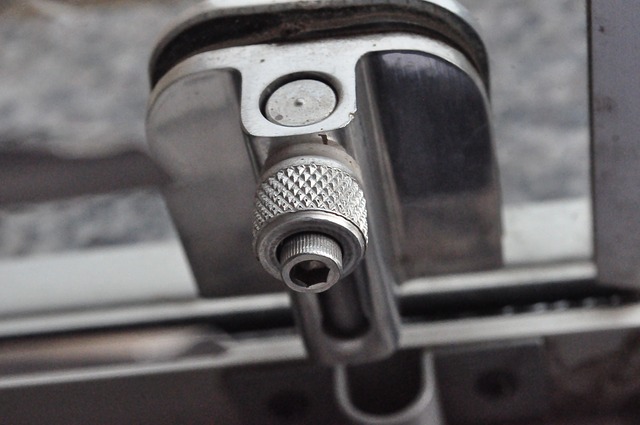Fixing v fastener

|
| A latch to fasten the window in position. |
Fixings are designed to attach objects to surfaces such as walls, floors, roofs, doors, holding them in place, usually on a permanent basis. They are a form of connector and play an indispensable role in construction. Usually a fixing is key to attach a component to one that is larger or immovable, such as fixing a cupboard to a wall, or a handle to a door, or a timber joist to a wall plate. These instances will require the use of fixings such as screws, plugs, bolts and nails.
In contrast, fasteners tend to be for holding things together, often of a similar nature, and of a smaller- or lighter-scale. In stationary, examples of this would be paper clips and staplers, which are fasteners and hold together sheets of paper – but they are not said to ‘fix’ them together.
In construction, staples from a staple gun can fasten sheathing to timber studs. Window latches are fasteners (not fixings) as they fasten a window for security but can be adjusted for opening. If the doors and windows were fixed in place, they would not be able to open.
Whether something is a fixing or fastener is not always clear as it can depend on the application and also on the way speech is used: a nail can be used to fix fence boards to posts, but it can also fasten a joist into a joist hanger. Yet others may maintain that the joist is ‘fixed’ into position by the nail. Depending on the interpretation, the nail in this example is both a fixing and a fastener.
The word 'fixing' can also be used to describe the physical process of fixing one thing to another or to the process of repairing something.
NB A fixture is '...an asset that is installed or otherwise fixed in or to a building or land so as to become part of that building or land in law’ (for example, a boiler)'. Ref HMRC
[edit] Related articles on Designing Buildings Wiki
- Adhesives.
- Cable tie.
- Clamp.
- Construction equipment.
- Construction tools.
- Crimp.
- Cramp.
- Fixings.
- Fixtures.
- Ground anchor.
- Industrial fasteners market.
- Rivet.
- Sneck.
- Soil nailing.
- Structural fasteners.
- Staples.
- Strap.
- Timber.
- Types of bolts.
- Types of fixings.
- Types of nails.
- Types of nuts.
- Types of screws.
- Types of washer.
- Upcycling buildings.
- Welding.
Featured articles and news
A change to adoptive architecture
Effects of global weather warming on architectural detailing, material choice and human interaction.
How big is the problem and what can we do to mitigate the effects?
Overheating guidance and tools for building designers
A number of cool guides to help with the heat.
The UK's Modern Industrial Strategy: A 10 year plan
Previous consultation criticism, current key elements and general support with some persisting reservations.
Building Safety Regulator reforms
New roles, new staff and a new fast track service pave the way for a single construction regulator.
Architectural Technologist CPDs and Communications
CIAT CPD… and how you can do it!
Cooling centres and cool spaces
Managing extreme heat in cities by directing the public to places for heat stress relief and water sources.
Winter gardens: A brief history and warm variations
Extending the season with glass in different forms and terms.
Restoring Great Yarmouth's Winter Gardens
Transforming one of the least sustainable constructions imaginable.
Construction Skills Mission Board launch sector drive
Newly formed government and industry collaboration set strategy for recruiting an additional 100,000 construction workers a year.
New Architects Code comes into effect in September 2025
ARB Architects Code of Conduct and Practice available with ongoing consultation regarding guidance.
Welsh Skills Body (Medr) launches ambitious plan
The new skills body brings together funding and regulation of tertiary education and research for the devolved nation.
Paul Gandy FCIOB announced as next CIOB President
Former Tilbury Douglas CEO takes helm.
UK Infrastructure: A 10 Year Strategy. In brief with reactions
With the National Infrastructure and Service Transformation Authority (NISTA).
Ebenezer Howard: inventor of the garden city. Book review.
Airtightness Topic Guide BSRIA TG 27/2025
Explaining the basics of airtightness, what it is, why it's important, when it's required and how it's carried out.





















